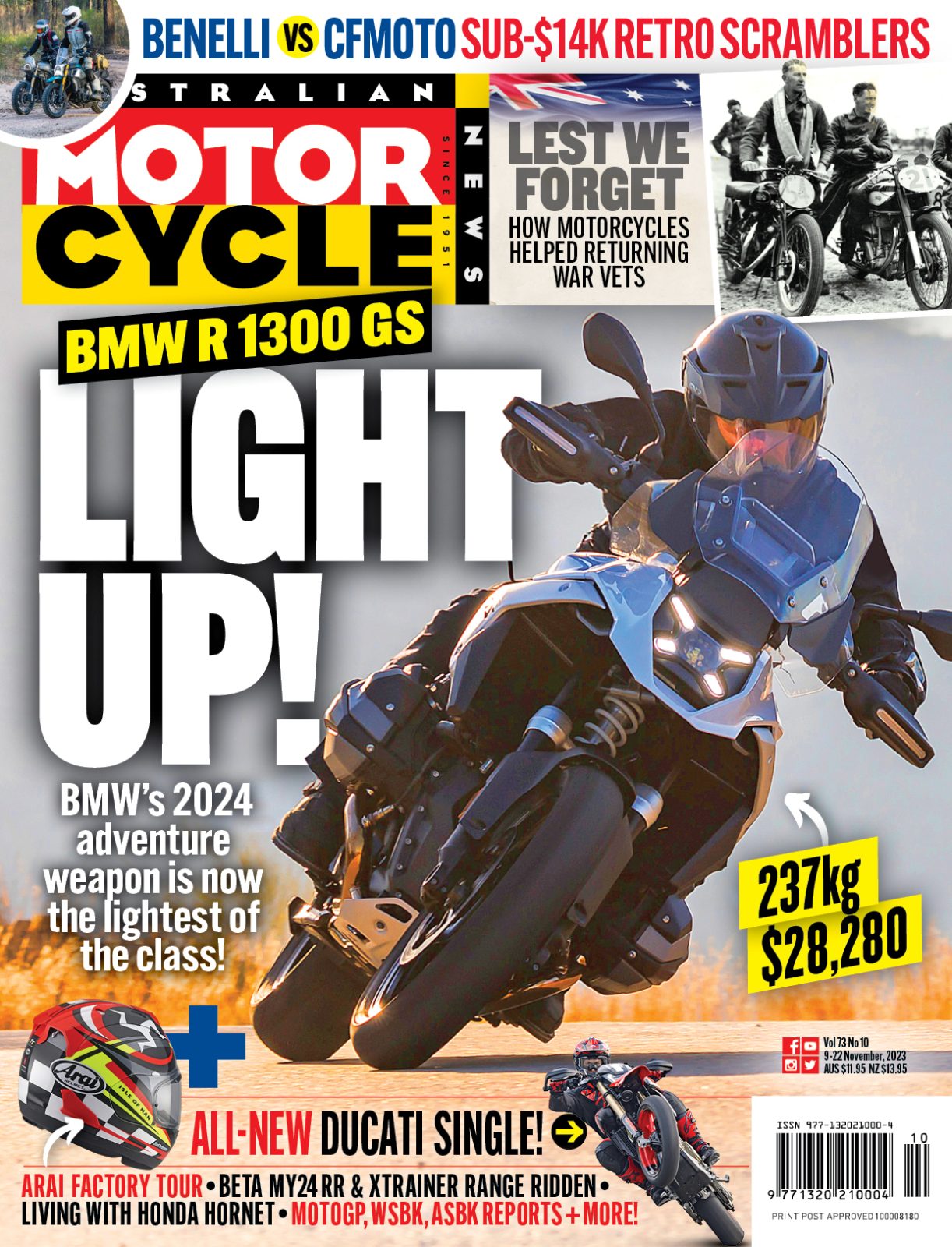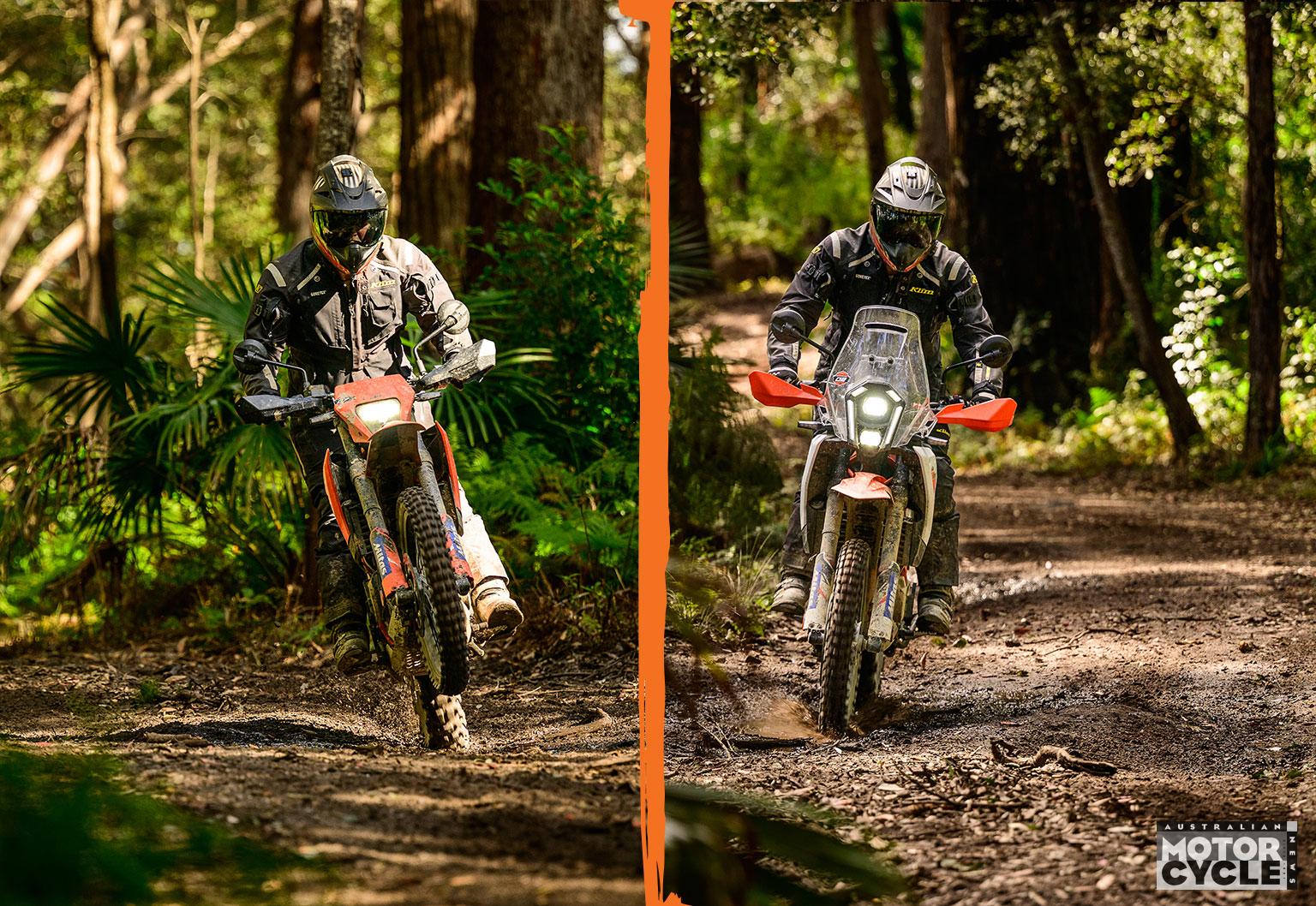Beta Motorcycles, while relatively new to the scene in Australia, has a rich history dating back to 1905 in Florence, Italy, making bicycles by hand. With a hunger for off-road performance, the company has won multiple world championships in both enduro and trials competition, with 2023 Enduro GP and E2 class World Champion Steve Holcombe, and 2023 E3 World Champion Brad Freeman its latest. A little closer to home, the Australian Hard Enduro Gold class this year was dominated by Beta Australia rider Reuben Chadwick. You can see the sort of bikes we are dealing with here.
With this kind of silverware in mind, it is easy to see why an average Joe may be intimidated by the RR range of bikes but, rest assured, there is a bike for every taste with no less than eight models to choose from in the RR range, as well as two Xtrainers for good measure.
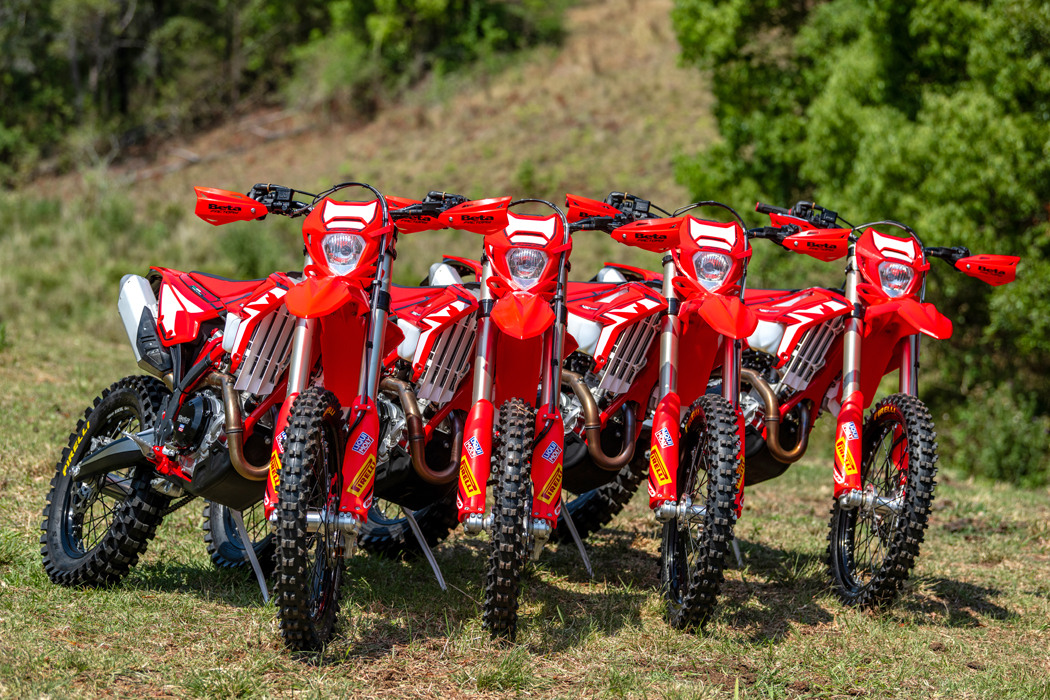
The last major update of the RR range came in 2020, and the updates since then have been subtle but significant thanks to the help of Holcombe and Freeman. The updates for the MY24 RR models include a new seat which feels flatter and a bit softer under the bum, even on the next to zero-kilometre test units which will get a bit softer with some hours on them. The front suspension has been developed to be a bit softer and improve flexibility with lighter upper fork tubes. This is aimed to increase sensitivity and controlled flexibility over the previous forks. I did feel the forks to be a bit softer than I remembered from the 2020 models, but I think I push them a bit harder than I did previously.
The 250cc and up models received new radiators that are lighter, stronger and reshaped to allow tighter tuning of the handlebar. It may seem odd, but when riding snotty singletrails and hard enduro, every bit of turning circle improvement is noticed. They are also more efficient at keeping the bikes cool and have a more robust metal radiator cap over the previous plastic one.

The front brake line has been tweaked with a better mounting set-up to help it survive the pummelling it cops in rough terrain. There are new radiator shrouds shaped to be slimmer between the knees for more freedom during cornering.
Lastly is the new very-red graphics which introduce a more modern look.
Some other more significant changes have been made to the RR 300 two-stroke machine. The engine’s main bearings are now a roller-style bearing in place of the ball bearings of the previous model to improve reliability and performance.
The RR four-stroke models had the traction-control system refined after feedback said it was too sensitive and invasive. It is hard to detect while it’s doing its job, so I think Beta hit the nail on the head there. Also, the airbox has been given a tweak to increase mid- to top-end power across all the four-stroke models. It’s worth noting that the entire RR and Xtrainer ranges are still fully road registrable in all Australian states and territories.
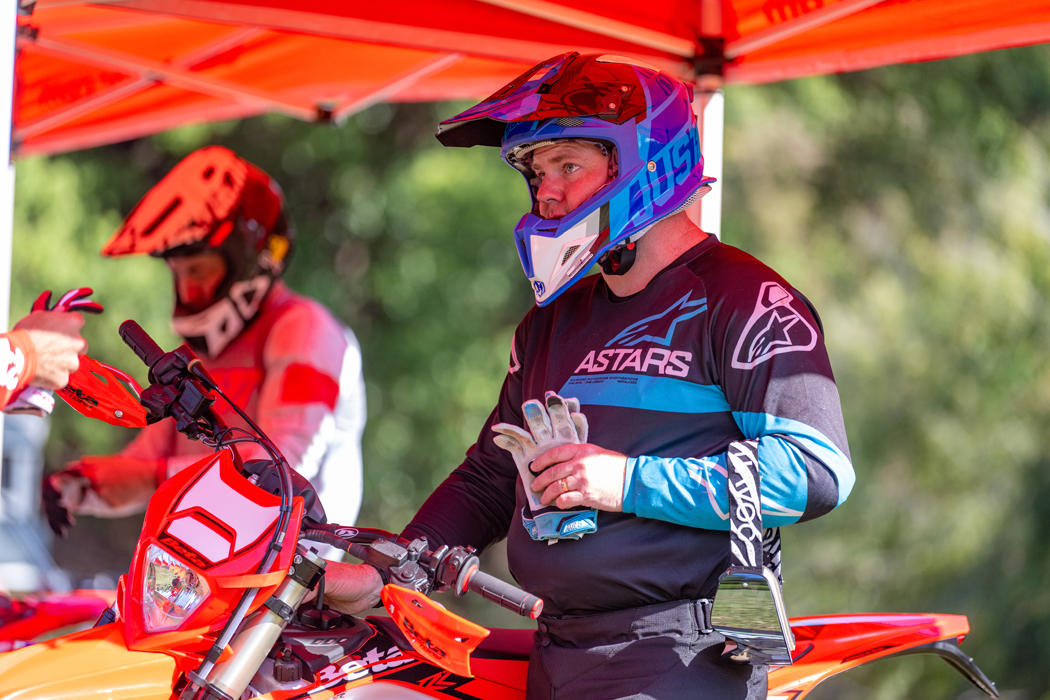
The ring dingers
Beta’s two-stroke RR range is made up of four bikes across two different chassis platforms. The 125cc and 200cc are based off a slimmer and more nimble chassis, whereas the 250cc and 300cc smokers share the same chassis as their four-stroke siblings. The Beta two-strokes are still carb fed, with oil injection (except the 125cc) for the old school fueling and performance, but also have adjustable ignition maps; just select the sun for full power or the cloud for reduced power output.
The 125cc, while not available on the test, is aimed at younger racers moving up to a full-sized bike. Or lighter riders looking for a thrill. The 125 is a proper ripper that loves to be ridden in the powerband. It is a racing-style bike and, as such, is the only model in the range not to feature electric start and oil injection.
Up next is one of my personal favourites, the 200cc. The 200 has the same slim chassis as the 125 but with more power, torque, electric starter and oil injection. I feel it’s a bit of a unicorn in the range, offering a raw and zippy power delivery. I tip the scales at 100kg, so the 200 does work hard if caught out of the power band, but it still has enough torque to recover when in the right gear. Holding the 200 pinned through the gears in the powerband is a trip down memory lane to riding my old KX80 as a kid; it is a real pocket rocket.
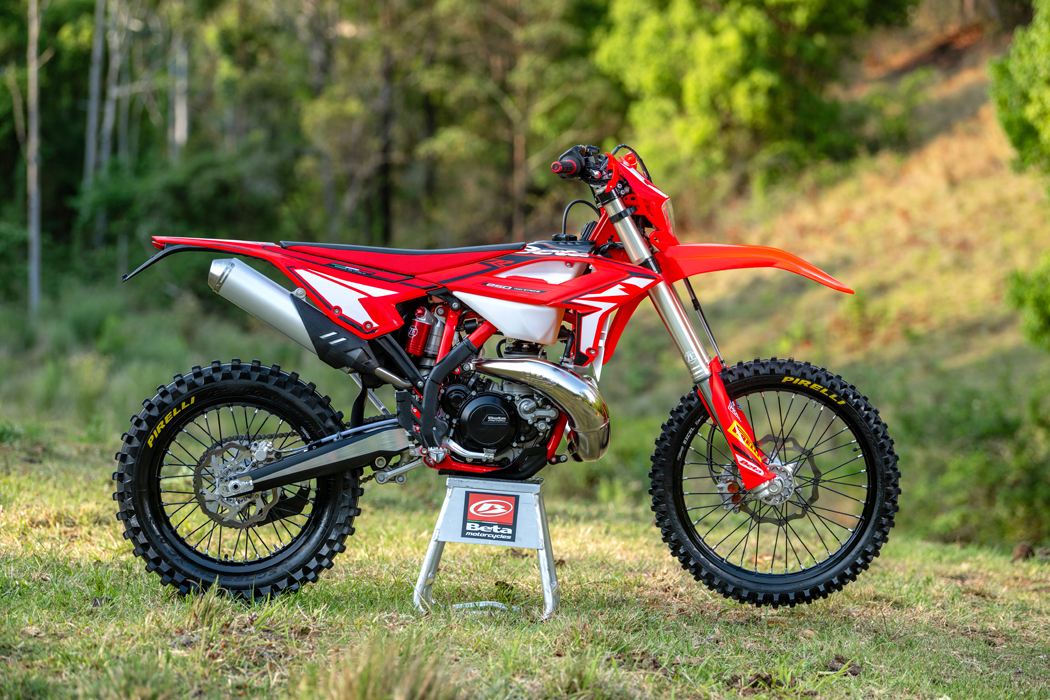
The step up to the 250cc two-stroke is a decent one. The 250 rolls on the full-size chassis and has the counter-balanced engine to help make it feel silky smooth in comparison to the 200. The 250 feels to me like a proper 250cc two-stroke motocross engine; plenty of torque but when the power valve opens, you need to be hanging on as it packs a decent punch. I own a 2018 Husqvarna 250cc enduro ring dinger and the Beta feels much stronger in the engine department than my bike.
Next we have the 300, the most popular of the RR two-stroke range among capable riders and it’s a different beast. The new engine sets it out on its own compared to the rest of the two-strokes. The power delivery is more linear and while it could rip your arms off in the top-end of the rev range, it has truckloads of torque down low for snotty enduro riding. The engine feels like it has a heavier flywheel effect allowing you to crawl up hills at pretty much idle speed and allows you to just gently power away without breaking traction, or looping it –whichever floats your boat.
I always thought I was a 250 kind of guy, but the RR 300 definitely surprised me with its poise while still carrying a big stick for when it’s really needed.

The thumpers
Not too many years ago, four strokes were the future. A lot of the die-hard two-stroke fans were wooed into four-stroke life and never looked back, even when the 300 two-strokes upped the ante and kept the two-smokers alive.
Beta has four different thumpers to choose from, and they go from mild to wild. All of the four-stroke range features twin-injector fuel injection, map switches and traction control. Traction control on a dirtbike is a long way from the traction control on your modern roadbike – there are no wheel-speed sensors here. The ECU keeps an eye out on both the revs and throttle position while scanning for spikes in revs, which would indicate a sudden loss of traction, and cuts power intermittently. It still allows you to churn up the dirt, chuck wheelies, powerslide and throw roost at the poor soul stuck behind you. It is for this reason that it is almost undetectable to a regular Joe like me.
The baby of the thumpers is the 350. I nicknamed this one the “hero bike”. It loves to be revved and it puts the hammer down smoothly without any sudden bursts of power. I could hold it flat where I wouldn’t dare on any of the other bikes which made me feel like a bit of a hero. It’s not slow by any stretch, but it’s the most user friendly of the bunch and suitable for less confident riders.

Step up to the 390 and things get a little bit grunty. With its longer stroke, the 390 is an ideal middle ground for riders wanting more torque than the 350 without giving up that predictable feeling and being overwhelmed by the power delivery. I feel the 390 is the unicorn of the four-strokes. It is a great middle-ground machine.
Up next is the 430cc weapon. It’s a bit of a powerhouse and has longer internal gearing than the smaller four-strokes, which makes it quite rapid. The power delivery is instant and relentless. I struggled to find anywhere in our test loop to really let it sing without exceeding my talent levels. Selecting the rain map was a nice way to take the edge off the 430 when you just wanted to ride lower in the revs and use torque.
The big daddy of the fleet is the 480cc monster. Featuring the longer gearing as on the 430, but with more torque and more top-end power, I would say that the 480 is more suited for desert riding. While not physically bigger, the 480 feels stauncher while riding in the singletrails and will not care in the slightest if you are two gears too high – it just chugs away. It is not for the unfit or inexperienced.

Fight club
Punching out multiple-capacity ranges isn’t a new thing for Beta, so the bikes are carefully thought out and, where possible, utilise a lot of similar parts across the range. However each has its own personality mainly thanks to the engines.
The chassis, brakes and suspension are the same on all bikes from the 250cc machine and up so they all have a very similar handling feel. The four-strokes carry about four to five extra kilograms of weight, and therefore they do have a bit of a heavier feeling and tend to load up the front-end more as you close the throttle. I get the feeling there is a stronger spring in the front of the four-strokes.
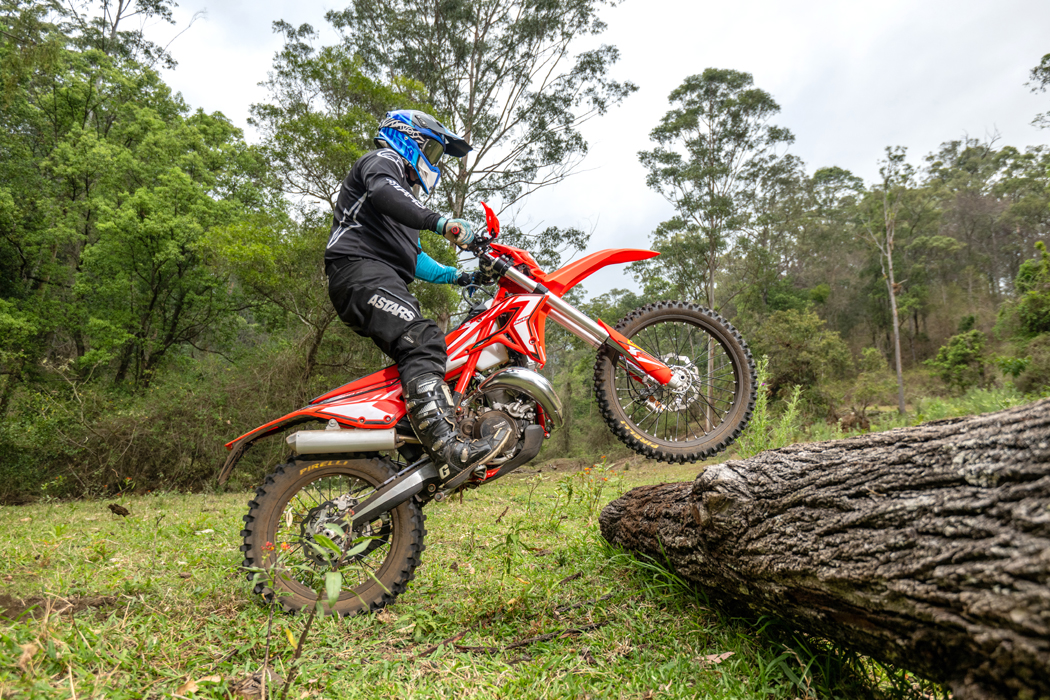
While I love the 350 and 390 I’m still not sure I would choose them over a two-stroke for singletrail riding and hard-enduro style riding. I feel less fatigued when riding the two-strokes thanks to the non-existent engine braking, that’s just me.
The brakes are identical across the whole range and are unchanged from the previous model. The Nissin brakes work like a charm; I can happily brake with one finger when I usually would be using two for added effect. The rear brake is accurate and easy to regulate even with motocross boots on. Overall they’re very easy bikes to jump on and ride straight out of the showroom.
Beta is expanding its reach in Australia by taking on new dealerships. There are currently 36 dealerships in Australia, mostly down the east coast, so spare parts are plentiful and easy to get hold of via your dealer or Beta’s online ordering system. Things look promising from a customer point of view with dealership support not far away for most, and the bikes are priced to move. That’s a bucket-load of bang for your buck.
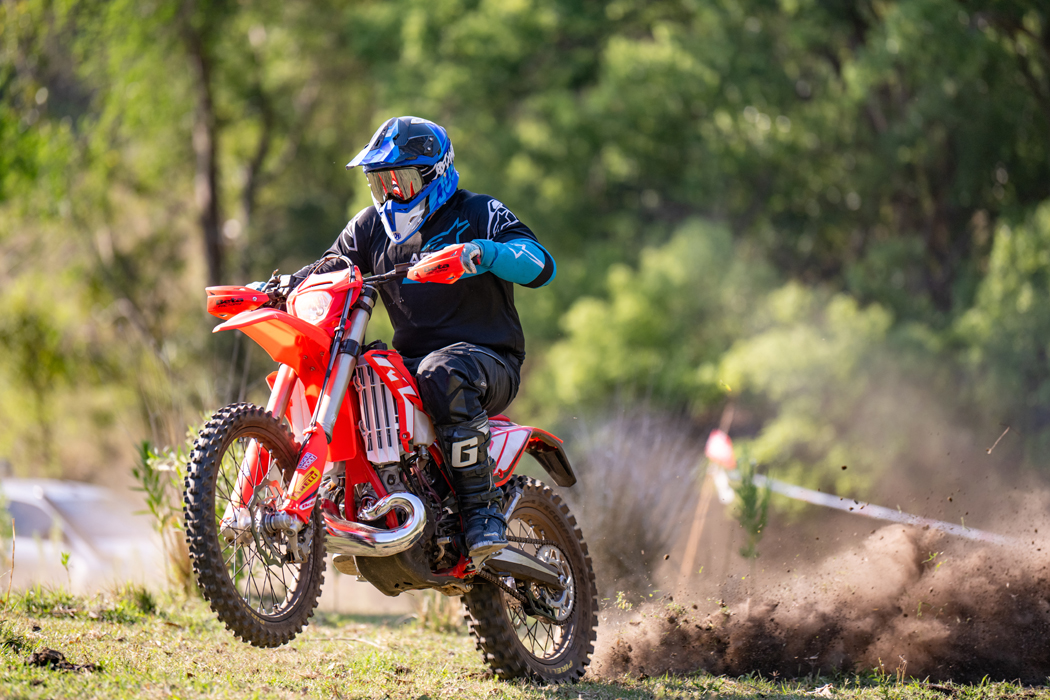
Test David Watt + Photography Busta Photo
